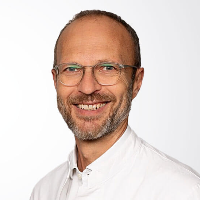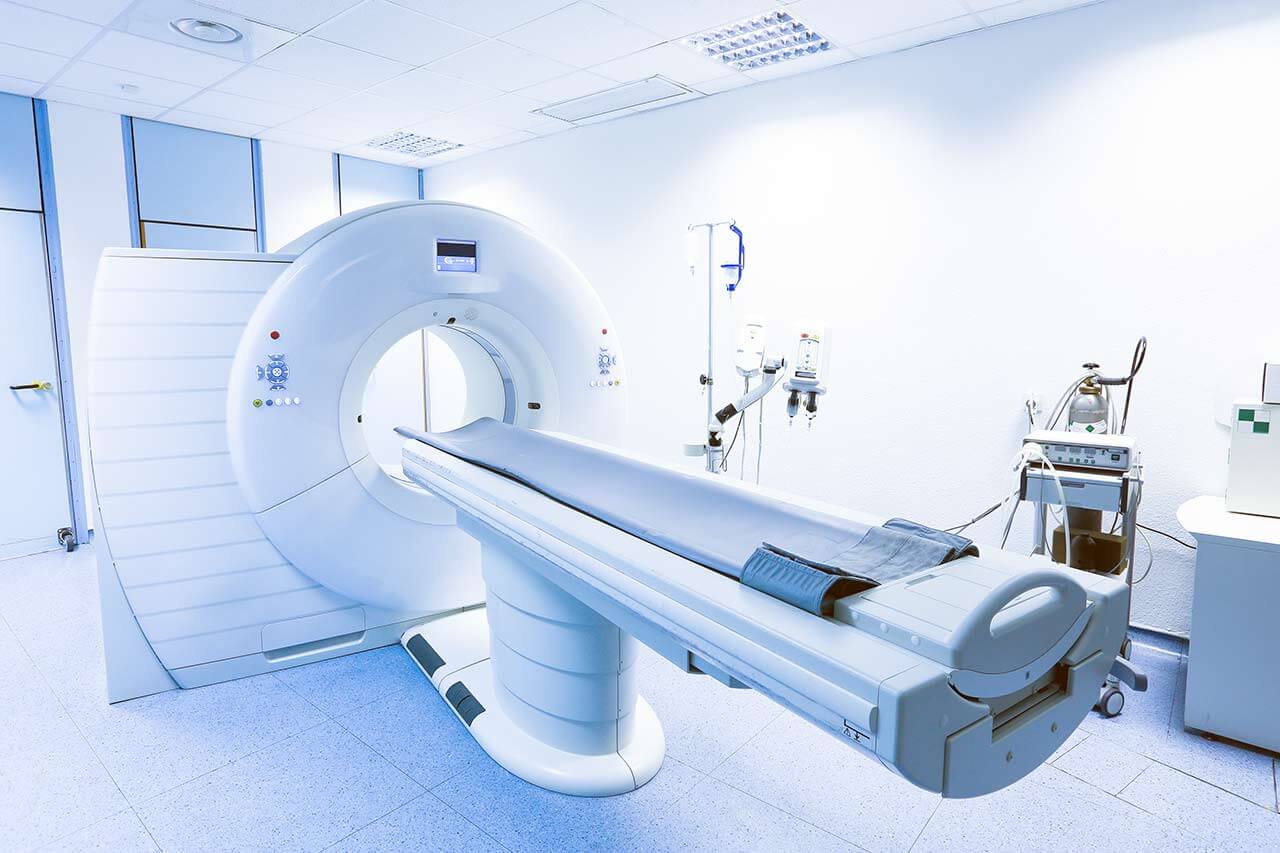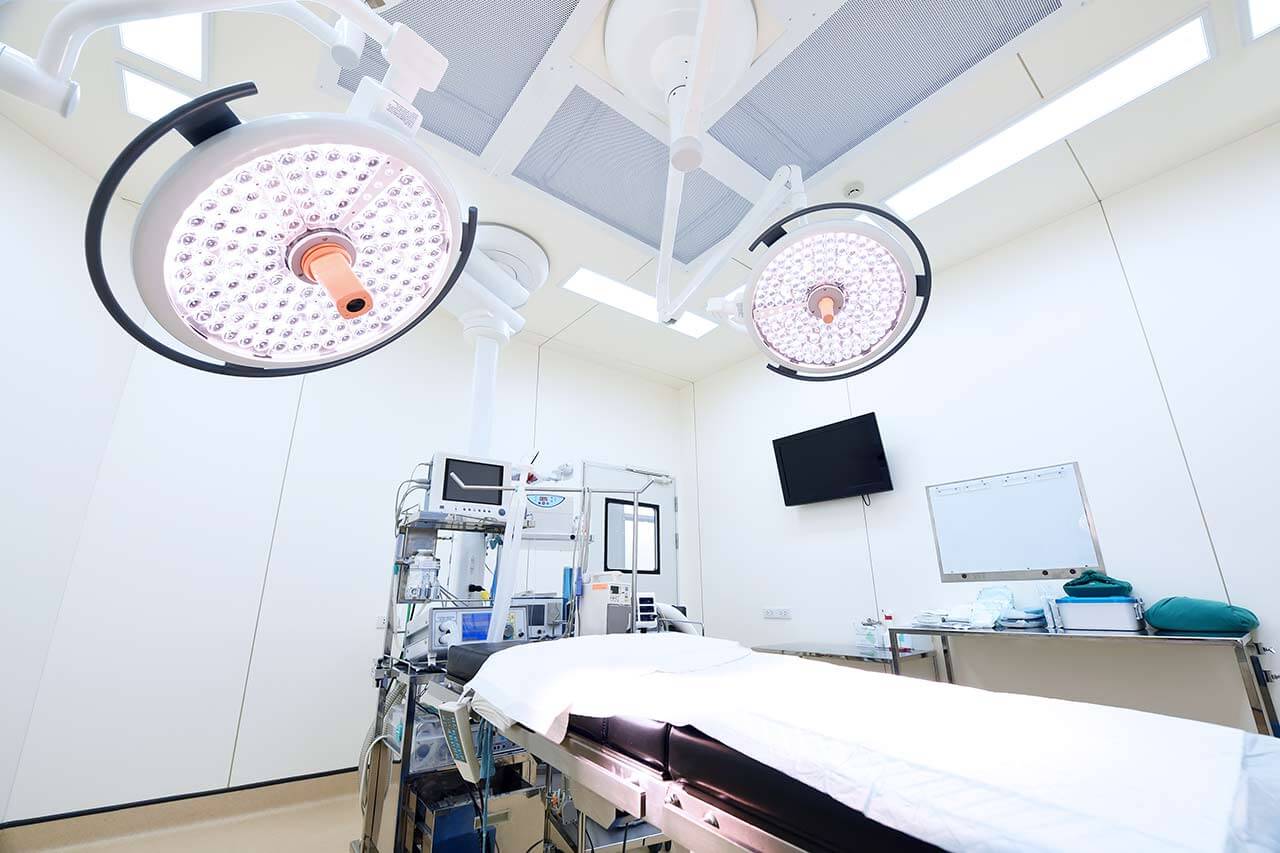
The program includes:
- Initial presentation in the clinic
- clinical history taking
- physical examination
- review of medical records
- laboratory tests:
- complete blood count
- general urine analysis
- biochemical analysis of blood
- indicators of inflammation (CRP, ESR)
- indicators of blood coagulation
- X-ray examination of the hip
- СТ scan of the hip
- preoperative care
- endoprosthesis replacement
- symptomatic treatment
- control examinations
- physiotherapeutic procedures
- orthopedic appliances
- the cost of essential medicines and materials
- nursing services
- full hospital accommodation
- explanation of future recommendations
How program is carried out
Preliminary preparation for surgery: quitting smoking and drinking alcohol 2 weeks before surgery; cancelling non-steroidal anti-inflammatory drugs (diclofenac, ibuprofen); cancelling anticoagulants (warfarin); normalization of body mass, if possible.
Preoperative examination, including consultation with an anesthesiologist and necessary related specialists. X-ray examination and MRI of the hip joint are performed. The examination takes 1-2 days.
Surgical hip endoprosthesis replacement. The operation is performed under general anesthesia and lasts for about 2 hours.
Postoperative care. During the first day after the intervention the patient stays in the intensive care unit, under round-the-clock medical supervision. After that, with a smooth course of the postoperative period, the patient is transferred to a regular ward and the drains are removed. The range of motion expands gradually, from light toes movements to walking. Walking with the use of walking aids is allowed in 3-5 days after the operation. Normal walking without the use of walking aids (crutches, cane) will become possible in 6-12 weeks.
Finally, the attending physician will evaluate the results of control examinations, schedule the date of discharge from the hospital and give you detailed recommendations for further follow-up and treatment.
Required documents
- X-ray examination of the hip joints
- MRI scan of the hip joints, if available
Service
You may also book:
 BookingHealth Price from:
BookingHealth Price from:
About the department
The Department of Orthopedics, Foot Surgery and Hand Surgery at the ATOS Fleetinsel Clinic Hamburg provides highly accurate diagnosis and effective treatment of a wide range of musculoskeletal diseases. Of particular clinical interest to the department's specialists is the treatment of shoulder and elbow disorders. Therapeutic options also include the treatment of hip, knee, and ankle pathologies, as well as foot and hand diseases. The department offers both conservative and surgical treatment, with surgery being the last-line treatment. The department's orthopedists prefer sparing surgery. Therefore, they mainly work with arthroscopic, endoscopic, and minimally invasive techniques. The operation is preceded by personal consultations, during which the patient is informed in detail about possible treatment options and predicted results. The high professionalism of the doctors deserves special attention because the department employs some of the best orthopedists in the country, which is confirmed by the ratings of the Focus magazine and certificates from the German Society for Orthopedics and Trauma Surgery (DGOU), the German Society for Shoulder and Elbow Surgery (DVSE), and other societies. The department enjoys the status of one of the leading centers in Germany for the treatment of orthopedic diseases. It has all the medical and technical resources available to provide high-quality medical services.
The department is headed by Prof. Dr. med. Jörn Kircher, an experienced orthopedist with excellent qualifications in shoulder and elbow surgery. He has more than 20 years of successful clinical practice. According to the Focus magazine, the doctor is one of the best specialists for shoulder and elbow surgery in all of Germany. In addition, Prof. Jörn Kircher received the highest rating among doctors in his specialty in Hamburg based on patient reviews on the online portal Jameda.
The department's primary area of specialization is the treatment of shoulder and elbow diseases. It should be noted that there are only a few medical institutions in Europe with such a narrow specialization. The department's orthopedists regularly treat patients with shoulder impingement syndrome, shoulder arthrosis, rotator cuff tears, shoulder dislocations, frozen shoulder, shoulder injuries, and other pathologies. The most common shoulder disease is impingement syndrome, a pathological condition that develops against the background of pinching of the soft tissue between the humeral head and the acromion process of the scapula. The main symptom of the disease is severe pain that intensifies when moving the shoulder. At the diagnostic stage, the department's doctors study the patient's medical history, conduct a physical examination, and perform imaging tests (X-ray, MRI, or ultrasound). Treatment is prescribed on an individual basis. Whenever possible, specialists use only conservative therapy. They may prescribe painkillers and anti-inflammatory drugs, physiotherapy, therapeutic exercises, cryotherapy, and electrotherapy. If a good result cannot be achieved with the above methods, doctors may consider surgery. Shoulder impingement surgery is performed in the department using arthroscopic techniques. The operation takes about 1 hour.
The department's team of orthopedists has extensive experience in the treatment of shoulder arthrosis (omarthrosis), in which the destruction of articular cartilage and adjacent bone tissue occurs. As the pathology progresses, pain in the shoulder intensifies and motor restrictions worsen, up to a complete loss of joint mobility. At the diagnostic stage, it is important for the department's doctors to analyze the patient's complaints and conduct imaging tests such as X-ray, ultrasound, and/or MRI. Treatment tactics for the early stages of shoulder arthrosis include conservative methods such as drug therapy to relieve pain, therapeutic exercises, physiotherapy, and heat therapy. In the advanced stages of the pathological process, intra-articular injections of autologous platelet-rich plasma or hyaluronic acid may be required. When the final stage of omarthrosis is diagnosed, the only treatment option is shoulder replacement surgery. The department's specialists perform these surgeries on a regular basis, so they have exceptional experience in this area and achieve excellent results. The surgeons work with high-quality modular prostheses that can be easily adapted to the anatomical characteristics of the patient's shoulder joint. The lifespan of an artificial joint is 10-15 years. The surgical procedure takes 1-2 hours.
The medical facility successfully treats knee diseases. Patients with knee arthrosis, articular cartilage lesions, patellar dislocations, meniscus tears, and torn cruciate ligaments can seek medical attention here. Whenever possible, conservative treatment is preferred, with surgery being the last-line treatment. The department's orthopedists work with minimally invasive and arthroscopic techniques, which significantly shorten the postoperative recovery period.
The department's therapeutic options are complemented by the treatment of foot and hand pathologies. In the field of foot surgery, the medical facility offers conservative and surgical treatment of hallux valgus, hallux rigidus, Achilles tendon ruptures, heel spurs, clubfoot, flat feet, and ankle arthrosis. Hand surgeons are responsible for the treatment of wrist arthrosis, rhizarthrosis, trigger fingers, Dupuytren's contracture, and carpal tunnel syndrome. Each patient benefits from a personalized treatment regimen tailored to his or her needs and wishes. If clinically indicated, specialists strive to carry out conservative treatment without resorting to surgery. When surgery cannot be avoided, it is performed using minimally invasive techniques.
The department's clinical focuses include the following:
- Orthopedics
- Treatment of shoulder and elbow diseases
- Conservative and surgical treatment of shoulder impingement
- Conservative and surgical treatment of shoulder arthrosis
- Conservative and surgical treatment of rotator cuff tears
- Conservative and surgical treatment of shoulder dislocations
- Conservative and surgical treatment of frozen shoulder
- Conservative and surgical treatment of shoulder injuries
- Conservative and surgical treatment of elbow arthrosis
- Treatment of hip diseases
- Conservative and surgical treatment of hip arthrosis
- Conservative and surgical treatment of hip impingement
- Conservative and surgical treatment of femoral head avascular necrosis
- Conservative and surgical treatment of hip dysplasia
- Treatment of knee diseases
- Conservative and surgical treatment of knee arthrosis
- Conservative and surgical treatment of knee cartilage lesions
- Conservative and surgical treatment of patellar dislocations
- Conservative and surgical treatment of meniscus tears
- Conservative and surgical treatment of cruciate ligament ruptures
- Treatment of shoulder and elbow diseases
- Foot surgery
- Conservative and surgical treatment of hallux valgus
- Conservative and surgical treatment of hallux rigidus
- Conservative and surgical treatment of Achilles tendon ruptures
- Conservative and surgical treatment of heel spurs
- Conservative and surgical treatment of clubfoot
- Conservative and surgical treatment of flat feet
- Conservative and surgical treatment of ankle arthrosis
- Hand surgery
- Conservative and surgical treatment of wrist arthrosis
- Conservative and surgical treatment of rhizarthrosis
- Conservative and surgical treatment of trigger fingers
- Conservative and surgical treatment of Dupuytren's contracture
- Conservative and surgical treatment of carpal tunnel syndrome
- Conservative and surgical treatment of epicondylitis
- Other medical services
Curriculum vitae
Higher Education and Professional Career
- Medical studies, University of Rostock and University of Basel.
- Admission to medical practice.
- Clinical preparation for board certification: University Hospital Hamburg-Eppendorf, Royal London Hospital, University Hospital Rostock – he held the position of Senior Physician and Deputy Head of the Department of Orthopedics in the latter clinic.
- Senior Physician, Department of Orthopedics, ATOS Clinic Heidelberg.
- Senior Physician and Deputy Head Physician, Department of Orthopedics, University Hospital Duesseldorf.
- Head Physician, Department of Shoulder Surgery and Arthroscopy, ATOS Orthopedic Clinic Cologne.
- Head Physician, Department of Orthopedics, Foot Surgery and Hand Surgery, ATOS Fleetinsel Clinic Hamburg.
Prizes, Awards, and Honors
- 2018 Research Award from the European Society for Surgery of the Shoulder and Elbow (SECEC/ESSSE).
- 2015 Alwin Jäger Award from the German Society for Shoulder and Elbow Surgery (DVSE).
- 2011 Japan-Korea Traveling Fellowship from the European Society for Surgery of the Shoulder and Elbow (SECEC/ESSSE).
- 2011 European Arthroscopy Fellowship from the Society for Arthroscopy and Joint Surgery (AGA).
Memberships in Professional Societies
- Society for Arthroscopy and Joint Surgery (AGA).
- German Society for Orthopedics and Trauma Surgery (DGOU).
- German Society for Shoulder and Elbow Surgery (DVSE).
- European Society for Surgery of the Shoulder and Elbow (SECEC/ESSSE).
- American Shoulder and Elbow Surgeons (ASES).
- Professional Association of German Orthopedists (BVOU).
- German Arthroplasty Society (AE).
Photo of the doctor: (c) ATOS Klinik Fleetinsel Hamburg
About hospital
The ATOS Fleetinsel Clinic Hamburg is a modern medical facility with an impeccable reputation. The clinic is located in the historical center of Hamburg, in the Fleetinsel district. After more than 20 years of successful clinical practice, the clinic has gained a leading position in the treatment of orthopedic diseases in Germany. The clinic specializes in the conservative and surgical treatment of joint, hand, foot, and spinal diseases. The clinic also offers services in the field of reconstructive and aesthetic plastic surgery. The fundamental principle of the clinic's work is the use of advanced technologies and effective treatment methods.
Medical care is provided by a team of highly qualified doctors, who are recognized as the best in their specialty according to the rating of the prestigious German Focus magazine. Specialists devote sufficient time to comprehensive diagnosis and individual consultations, during which they tell patients in detail about possible treatment options and expected outcomes. Whenever possible, preference is given to conservative treatment. Surgical procedures are performed using minimally invasive techniques, allowing patients to recover quickly with virtually no risk of postoperative complications and excellent cosmetic results.
The beautiful interior design of the ATOS Fleetinsel Clinic Hamburg deserves special attention. The healthcare facility has created the most comfortable conditions so that patients can fully concentrate on restoring their health. The nursing staff is happy to help patients, is interested in their needs and wishes, and provides sensitive care.
More than 98% of patients recommend treatment at the ATOS Fleetinsel Clinic Hamburg, which shows a very high level of patient satisfaction with the medical services provided.
Photo: (с) depositphotos
Accommodation in hospital
Patients rooms
The patients of the ATOS Fleetinsel Clinic Hamburg stay in comfortable single and double rooms with all amenities. The rooms have a modern design and are decorated in bright colors. Each patient room has an ensuite bathroom with a shower and a toilet. The patient rooms are equipped with a comfortable, automatically adjustable bed, a bedside table with a pull-out tray, a wardrobe, a table and chairs, a telephone, and a TV. The patient rooms have access to Wi-Fi.
Meals and Menus
The clinic offers delicious and healthy meals three times a day: breakfast, lunch, and dinner. The patient can be provided with an individual menu if necessary.
Further details
Standard rooms include:
![]() Toilet
Toilet
![]() Shower
Shower
![]() Wi-Fi
Wi-Fi
![]() TV
TV
Accompanying person
Your accompanying person may stay with you in your patient room or at the hotel of your choice during the inpatient program.
Hotel
You may stay at the hotel of your choice during the outpatient program. Our managers will support you in selecting the best option.




